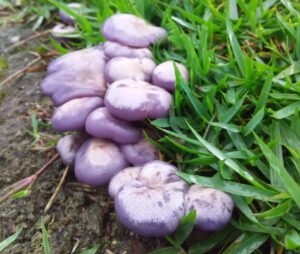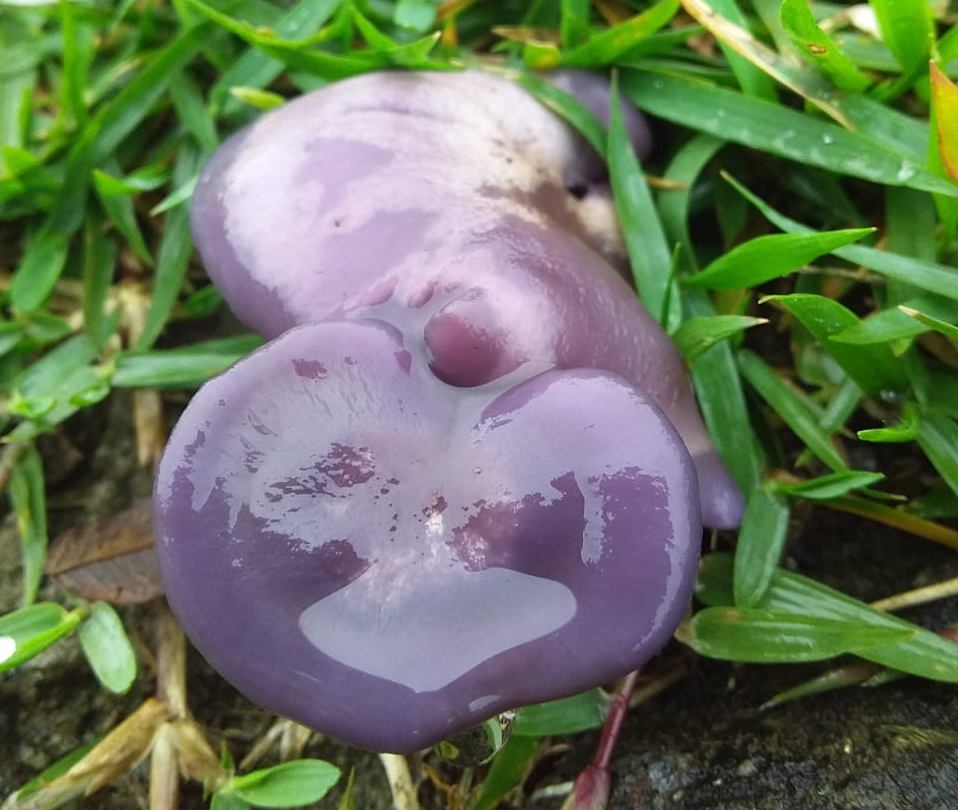 His name refers to the ethylic rituals of antiquity. Its way of growing in a circle makes reference to magical universes of fairies and elves. It is both delicate and intense, awakening the senses. Wrapped in something of mystery and enchantment, the Lepista Sordida is an edible mushroom present in the Atlantic Forest and full of potential to be explored.
His name refers to the ethylic rituals of antiquity. Its way of growing in a circle makes reference to magical universes of fairies and elves. It is both delicate and intense, awakening the senses. Wrapped in something of mystery and enchantment, the Lepista Sordida is an edible mushroom present in the Atlantic Forest and full of potential to be explored.
Combining a delicate appearance with intense flavors, the Lepista Sordida stirs up the sensoriality. It is a mild mushroom and tasty to the touch, especially the lamellae – which are the lower part of the hat through which the spores, responsible for the reproduction of the fungus, are dispersed.
For the palate, it brings an intense and delicius taste combined with a soft and consistent texture. It's not easy to define its flavor, as it seems to refer to different universes, from the forest to the sea. Important: before tasting this mushroom, it is necessary to cook it. Lepista Sordida cannot be eaten raw, in which state it is toxic. After going through some cooking - such as boiling or stir-fry - the toxins are eliminated and it is ready for consumption.
Growing on top of the litter - that layer of organic material on top of the soil -, the Lepista Sordida is gregarious, that is, always appears in groups. The different mushrooms can grow forming a circle, known as a fairy or elf ring.
The word Lepista refers to a type of chalice that was used in Greek and Roman temples and makes reference to the concave shape of the mushroom's hat, which resembles a cup. Now the term Sordida has several meanings and one of them is dirty, which can refer to its color, which is usually_grayish.
Its color, incidentally, is not always the same or easy to define. She presents some variations, oscillating between lilac, violet and white in grayish tones. The Lepista Sordida is small, fits in the palm of the hand, has a hat three to ten centimeters wide and a strain (structure similar to the stem) up to ten centimeters high.

In addition to its gastronomic and nutritional value, the Lepista Sordida brings other attributes. In the field of medicine and pharmacy, academic research shows that it has compounds with properties antibacterial, antibiotic, antifungals and antioxidants, among others. In the textile industry, research indicates that its extract could be used as a bleach, carrying out the treatment of waste water pollutants.
If biology and other sciences succeed in describing, cataloging and dissecting this fungus, this knowledge is not enough to end the fascination it can generate. Walking through the forest's biodiversity and coming across a group of mushrooms forming a violet circle contrasting with the leaves on the ground is an incredible experience. The alert that the attractive color can bring is quickly replaced by the expectation of the flavors it provides and which no description can handle.
Photos: Jorge Ferreira


Caminhando no Campus Butantã, da Universidade de São Paulo, reduto sobrevivente da Mata Atlântica, deparei-me com vários deles. Fotografei para identificar e, no dia seguinte, quando voltei, tinham passado a roçadeira e não sobrou um único.
Estou com alguns no jardim bem parecidos. Complicado ter certeza se e ele mesmo. Mais confesso que as cores são maravilhosas.
Maristela, duas característica para a identificação da Lepista Sórdida, além das descritas acima é: ao colher se não tiver cuidado o chapéu quebra com muita facilidade, então faça o teste depois de colhido quebrando o chapéu em bandas. O estipe (tipo o caule) ao apertar entre os dedos solta os pedaços com muita facilidade onde você pode nota que não é fibroso.
Muito legal! Já vi esse cogumelo algumas vezes aqui em casa, moro em Brasília, na área rural na região da Fercal. Na próxima vez preparo e como esse cogu 😉
Que privilégio, William! Depois compartilha consoco o preparo!